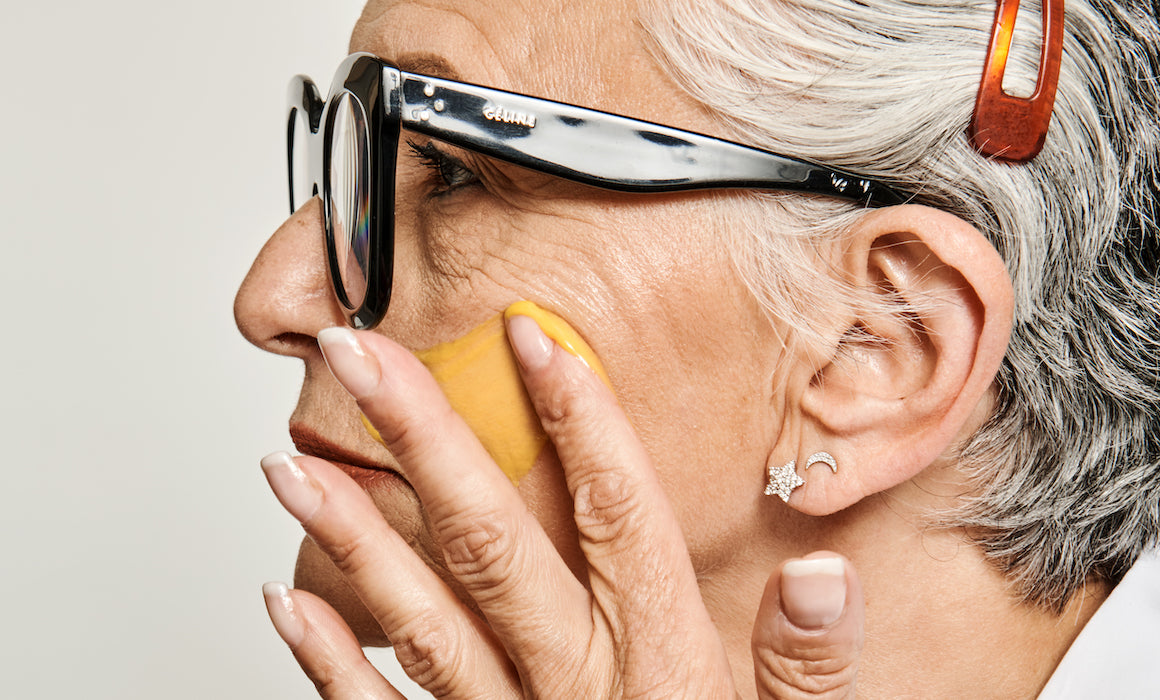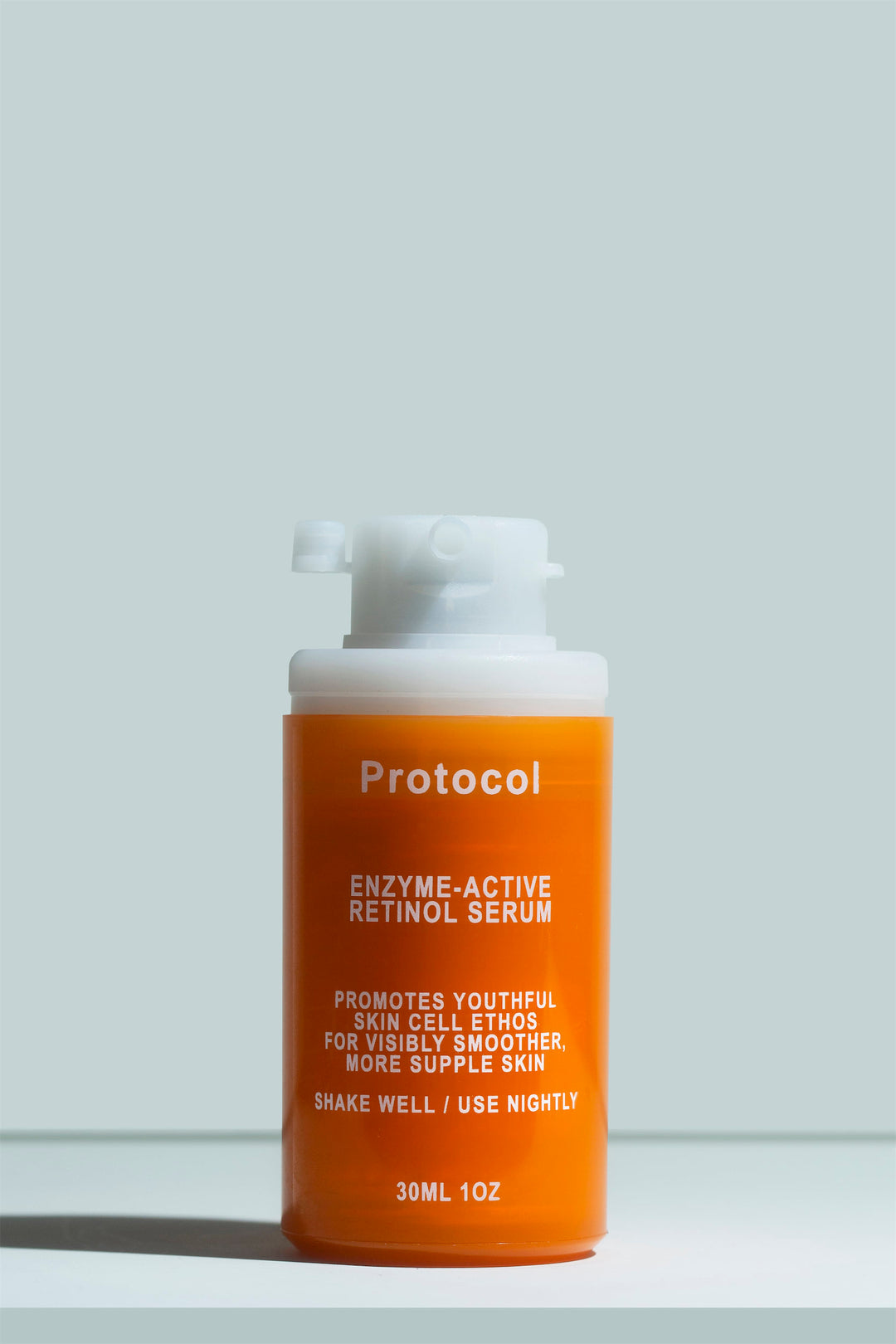Retinol for Wrinkles


There’s almost no room for debate - it’s well accepted that no cosmetic ingredient beats retinol for wrinkles. If you’ve been curious about adding retinol to your skincare routine to reduce or prevent fine lines and other signs of photoaging, this post is for you.
We dive into how retinol works, how different kinds of retinoids impact skin aging, and how to add retinol to your routine safely. We’ll also answer a few of the more commonly asked questions about retinol as an anti-aging ingredient. Finally, we’ll answer the most burning question - which retinol is best for wrinkles?
What is retinol?
Retinol is a form of vitamin A that has become very popular in skincare, and for some very good reasons. On the skin, retinol converts into retinoic acid through a two-step process. Retinoic acid regulates and increases the reproduction of skin cells.
This makes skincare ingredients in the retinol family incredibly useful for addressing a massive range of skin concerns, from overall skin tone and texture to specific concerns like hyperpigmentation, breakouts, and, indeed, wrinkles.
Retinol is the fat-soluble form of vitamin A, but the term is often also used to refer to retinoids broadly, including retinoic acid, retinaldehyde, and synthetic retinoids. Further below, we explain the differences between the different retinoids.
Understanding wrinkle formation
Wrinkle formation is largely associated with aging. As we grow older, our bodies have a harder time repairing themselves, which impacts the skin in a few ways. The skin’s ability to renew itself and generate the proteins that keep it firm and tight (i.e. collagen and elastin) slows down.
At the same time, portions of the dermis and epidermis become thinner while the outermost layer of the epidermis, which is composed entirely of dead skin cells, remains the same or even gets thicker.
This change to the structure of the skin causes it to become lax and less resistant to gravity. It also prevents the skin from bouncing back into place easily after it has moved, which is how we end up with expression wrinkles like frown lines, smile lines, and crow’s feet.
This entire process is further exacerbated by oxidative outside forces that lead to inflammation and skin cell destruction. Number one among these forces is sun exposure, but pollution, stress, and cigarette smoke also play a role. The skin aging caused by these factors is often referred to as “extrinsic aging” since it’s caused by factors beyond genetics.
Why is retinol good for wrinkles?
Retinol is the best skincare ingredient for reducing and preventing wrinkles. It counters the factors that lead to skin aging directly, by improving cell proliferation and stimulating the production of new collagen, which is the “backbone” of the skin and responsible for its firmness. In this way, retinoids can very literally “fill in” wrinkles. That said, choosing an effective retinoid for the job is key!
Types of retinoids for wrinkles
Retinol’s anti-aging effects are well-documented and backed by a lot of research, although the level of results varies depending on the kind of retinoid that’s being used. Here is an explanation of the main retinoids used to care for the skin. Check out our guide to types of retinoids for a more in-depth understanding of their effects.
Strong but irritating: retinoic acid
Retinoic acid is the most powerful of the retinoids. It impacts the skin directly, working to improve cell differentiation. This leads to better cell behavior and improved formation of collagen.
However, retinoic acid is also known to cause irritation, peeling, and flaky skin. Since inflammation is a marker of skin aging, any irritation caused by tretinoin can be counter-productive to the goal of reducing wrinkles.
In most countries, retinoic acid is only available by prescription, and it’s very important that you speak to your doctor before starting to use it.
Balanced renewal: retinal/retinaldehyde
Retinaldehyde (which we’ll shorten to retinal from here on out) is the next step down from retinoic acid. It’s the most potent retinoid that’s available as a cosmetic rather than as medication.
Once applied to the skin, retinal converts into retinoic acids so it’s able to influence the skin in a similar manner. Research shows that it performs just as well as retinoic acid and much better than retinol when it comes to wrinkles.
Retinal is heavily underused in skincare because it’s very quick to degrade once exposed to oxygen and light. This makes formulating with it a difficult process and leads to a lot of retinal products that simply cannot be effective. To solve the issue, we developed a clinical-grade, totally airless, and UV-proof bottle based on technology originally designed for the aerospace industry. This way, we’re able to keep our retinal-based Enzyme-Active Retinol Serum fresh and active at all times.
Gentle and mild: retinol
Next, we have retinol, which is much more common than retinal. Once applied to the skin, retinol undergoes two conversions. First, it oxidizes to become retinaldehyde, and then that retinaldehyde oxidizes to become retinoic acid. This two-step conversion process leads to retinol being about 20 times less potent than retinoic acid, so while it can help with wrinkles, it’s not as effective as retinal or retinoic acid.
Largely ineffective: retinyl esters
These are the weakest retinoids which also happen to have the least amount of data to back them up. You’ll see them in ingredient lists as retinyl palmitate, retinyl acetate, retinyl propionate, and similar names. They’re used in skincare because they’re stable, easy to formulate, and not likely to cause any irritation. Unfortunately, they’re also not particularly likely to help with wrinkles or other skin concerns.
How to use retinol for anti-aging
We have a few tips that’ll help you introduce retinol into your skincare routine with minimal irritation and in a way that boosts its wrinkle-fading effects.
- Start slow. Retinal isn’t as irritating to the skin as other retinoids, but reactions to it can still vary. We recommend introducing it into your skincare routine slowly. For the first week or two, use it every other day. If all goes well, you can increase the frequency to daily use.
- Use sunscreen. The only product that surpasses retinol when it comes to anti-aging is sunscreen. Since the sun is the main force that leads to extrinsic aging, sun protection is a must in any routine designed to address wrinkles. Make sure to choose a sunscreen with at least 30 SPF and broad-spectrum protection, and use enough of it every day.
- Moisturize. Moisturizing is a must, especially when you’re using retinol. Moisturizers work to infuse the skin with water, which then plumps it up for a springy, glowy complexion. This increase in hydration can immediately improve the look of wrinkles. Additionally, it also helps mitigate some of the dehydration that retinoic acid can cause at the start (although this is less of an issue with retinaldehyde-based products).
- Retinol-boosting ingredients. Retinol works by signaling new and improved skin cell production, but other ingredients can help it work even better. Vitamin C serums, for example, give the skin a protective boost of antioxidants in the morning to inhibit external damage while also further supporting collagen production. If your skin is quite hearty, using a gentle glycolic acid exfoliant promotes the shedding of dead skin cells, to smooth the skin from the surface while retinol works from below.
FAQ:
Is retinol better than collagen for wrinkles?
Retinol is definitely better than collagen when it comes to addressing wrinkles.
In fact, collagen isn’t particularly beneficial as a skincare ingredient. While it’s an essential protein in our skin, applying it topically isn’t going to replace your skin’s natural collagen.
Unlike retinol, which actually stimulates collagen production, the most that collagen can do is hydrate the skin. As a humectant, it’s fine but no better than common hydrating agents like glycerin and hyaluronic acid.
It’s worth noting that all collagen used in skincare is derived from animals (usually fish or cows), so we think it’s always better to choose vegan and plant-based ingredients.
Which is better for wrinkles, vitamin C or retinol?
Vitamin C and retinol are both excellent for wrinkle treatment, but between the two, retinol has more data to back its efficacy. Vitamin C largely works as an antioxidant to prevent some of the harmful effects of sun and pollution damage, although it does have some collagen-boosting effects.
For best results, we recommend using both! Vitamin C is most beneficial in the morning when it can reinforce the skin’s protection from oxidation and boost the efficacy of your sunscreen. Then, retinol fits in seamlessly at night, when it can penetrate slowly and impact the skin’s repair mechanisms.
Can retinol make wrinkles look worse?
Retinol, especially stronger forms of it like retinoic acid, can make wrinkles look worse initially. Usually, this is a side-effect of irritation and skin peeling, which may make wrinkles more pronounced.
We don’t think that’s a desirable effect, though - while retinoic acid will still ultimately fade wrinkles in the long term, any temporary irritation actually compromises the process. We think it’s best to choose options like retinal, which are less likely to cause irritation and often reduce wrinkle visibility very quickly.
Is retinol safe under the eyes?
Retinol can be very useful for addressing crow’s feet around the eyes, but it’s important to be cautious. The eye area is significantly thinner and more sensitive than the skin on other parts of the body, and some retinoids can irritate it. Most of our clients are able to tolerate our Retinol Serum around the eyes, but your mileage may vary so be cautious.
Bottom line: which retinol strength is best for wrinkles?
In our experience, retinaldehyde hits the sweet spot between strength and gentleness. Research shows that it offers the same anti-aging effects as tretinoin, but without irritation.
Our clients show incredible results, even when they’ve previously used stronger retinoids. This is probably because retinal is significantly less likely to irritate the skin. Inflammation can trigger oxidative stress that contributes to premature aging, so in a way, retinaldehyde actually addresses wrinkles much like pure retinoic acid would, but without potentially contributing to further inflammation.
The skin only converts as much retinal as it can handle, which has an attenuating effect on inflammation. The remainder can then be stored in the skin, for conversion at a later time when the skin can handle it.
Ultimately, any retinol can help your skin appear younger and smoother, but retinal is our favorite by far.





